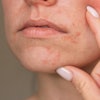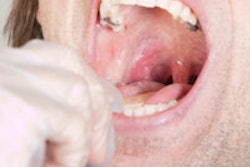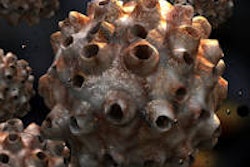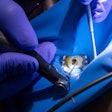
In addition to being screened for lung cancer, heavy smokers should also be checked for head and neck cancer (HNC) to improve early detection and survival, according to a new study in the journal Cancer (January 5, 2015).
Head and neck cancer is the world's sixth most common type of cancer. Worldwide, 600,000 people are diagnosed with it annually and about 350,000 die. In the U.S. alone, about 55,000 cases and 12,000 deaths due to HNC were estimated in 2014 (CA Cancer J Clin, January 7, 2014, Vol. 64:5, pp. 9-29).
Risk factors
The majority of head and neck cases are squamous cell carcinomas (HNSCCs) and affect the oral cavity, pharynx, or larynx. Tobacco use and alcohol consumption are the major risk factors for HNSCC. About 75% of HNSCC cases are associated with these lifestyle factors.
Oral infection with human papillomavirus (HPV), especially HPV type 16, is an important independent risk factor for the development of oropharyngeal squamous cell carcinomas (SCCs), according to research.
Approximately 4% of HNSCC cases are due to alcohol alone, studies show, and about 25% of cases are attributed to HPV infection.
Early detection of HNC is associated with fewer deaths and improved survival. For patients diagnosed with localized disease, estimated five-year survival rates are 83% for oral cavity and pharyngeal cancer and 75% for laryngeal cancer (SEER Cancer Statistics Review, December 17, 2014). Unfortunately, the majority of new HNC cases are diagnosed after the cancer has metastasized, resulting in five-year survival rates of 61% and 37% for oral cavity and pharyngeal cancer, respectively, and 43% and 35% for laryngeal cancer (SEER Cancer Statistics Review, December 17, 2014).
 Brenda Diergaarde, PhD. All images courtesy of the University of Pittsburgh.
Brenda Diergaarde, PhD. All images courtesy of the University of Pittsburgh."When caught early, the five-year survival rate for head and neck cancer is over 83%," said Brenda Diergaarde, PhD, senior author of the new study, in a statement. "However, the majority of cases are diagnosed later when survival rates generally shrink below 50%. There is a strong need to develop strategies that will result in identification of the cancer when it can still be successfully treated." Diergaarde is an assistant professor of epidemiology at the University of Pittsburgh Graduate School of Public Health and member of the University of Pittsburgh Cancer Institute.
However, since only a relatively small number of people will develop HNC, screening for it in the general population has not proved effective, according to the researchers. Since people most at risk for lung cancer are also those most at risk for HNC, screening only people considered to be at high risk for lung cancer may be more feasible and successful, they noted.
Methods
“The patients at risk for lung cancer ... are the same patients that our study shows also likely would benefit from regular head and neck cancer screenings.”
The researchers analyzed the records of 3,587 people enrolled in the Pittsburgh Lung Screening Study, including current and ex-heavy smokers age 50 and older, to see if they had a higher chance of developing HNC.
Of these participants, 23 (0.64%) developed HNSCC over 9.5 years of follow-up per person. Most of them were males who started smoking when they were young and smoked for many years.
The majority of cases were cancer of the oral cavity or pharynx (56.5%), and the median time before being diagnosed was 5.1 years.
In the general U.S. population, fewer than 43 per 100,000 people would be expected to develop HNC annually among those 50 and older, the researchers said. But among the study participants, the HNC rate was nearly double: 71.4 cases annually per 100,000 people.
Conclusion
Based on the accessibility of the head and neck area for physical examination, the possibility of identifying premalignant lesions and early-stage tumors, and the easily identifiable risk factors, HNSCC appears to be particularly suited for screening programs that target high-risk subjects, according to the researchers.
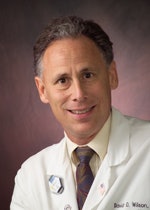 David O. Wilson, MD, MPH.
David O. Wilson, MD, MPH.However, they noted that the U.S. Preventive Services Task Force concluded in 2013 there is still insufficient evidence to screen for oral cancer.
"Head and neck cancer is relatively rare, and screening the general population would be impractical," concluded co-author David O. Wilson, MD, MPH, an associate director of the University of Pittsburgh Medical Center's Lung Cancer Center. "However, the patients at risk for lung cancer whom we would refer for the newly recommended annual screening are the same patients that our study shows also likely would benefit from regular head and neck cancer screenings. If such screening reduces mortality in these at-risk patients, that would be a convenient way to increase early detection and save lives."


